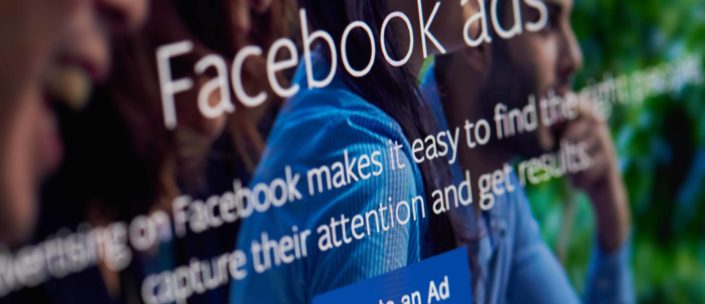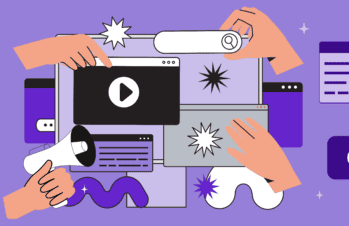For many companies, be it political campaigns or clothing brands, Facebook ads have become an essential piece of their media plan.
According to Statista, Facebook has 2.7 billion active monthly users who span the globe, and that’s a captive audience marketer wants to tap into. So, naturally, designing campaigns to target Facebook users is a smart choice.
That said, it’s a tricky proposition as well. Facebook’s algorithm is ever-evolving. And the latest changes to Facebook’s advertising rules, announced in September, have left many campaign managers scratching their heads, wondering just how to optimize yet again for Facebook’s latest ad adjustments.
In an announcement titled “Improving Ad Performance Through Ad Volume Guidance,” the social network explained that henceforth the company would “introduce ad limits per Page – a limit on ad volume that will help advertisers reduce costs and improve ad performance” beginning in February 2021.
“We’re implementing ad limits because very high ad volume can hinder an advertiser’s performance. With too many ads running at the same time, fewer ads exit the learning phase and more budget is spent before the delivery system can optimize an ad’s performance,” the company said.
What does that mean? We’ll break down Facebook’s ad changes in this guide and discuss 7 ways to navigate and maximize Facebook ads amid these new limitations.
Why Adjust Ad Limitations?
First off, you might be asking, why is Facebook changing the rules again on ads?
There’s the obvious answer — that tech is always evolving.
But the more nuanced response from the company is that “high ad volume doesn’t equate to high performance.” Facebook’s explanation says that while its “ads delivery system learns more about the best people and places to show the ad each time it’s shown, the more an ad is shown, the better the delivery system becomes at optimizing the ad’s performance. When an advertiser runs too many ads at once, each ad delivers less often.”
The idea is that different sized advertisers have different needs. “Since each ad’s performance improves the more it is shown, advertisers of different sizes should use different ad volumes to improve ad performance,” writes Facebook. Thus the company will be rolling out 4 different ad limit tiers.
What do Facebook’s new ad limitations look like?
These are the new rules for Facebook’s ad limitations:
| Advertiser Size | Ad Limits Per Page |
| Small to medium-sized Pages (advertising <$100K in their highest spending month in the last 12 months) | 250 ads |
| Medium to large sized Pages (advertising $100K to $1M in their highest spending month in the last 12 months) | 1,000 ads |
| Larger Pages (advertising $1M to $10M in their highest spending month in the last 12 months) | 5,000 ads |
| Largest Pages (advertising >$10M in their highest spending month in the last 12 months) | 20,000 ads |
When will Facebook’s new ad limitations officially start?
February 2021.
Will Facebook’s new ad limitations affect my brand?
That will depend on your brand and how many ads you typically run—but as you can see, those limitations are pretty generous. Most brands probably won’t even notice the change.
But you still want to know how to design and tailor your limited ads to get the best ROI. Here are 7 tips
1. Set goals for Facebook
Just because there are new ad limits doesn’t mean you should throw out the fundamentals of crafting a great Facebook ad campaign. Step one of any marketing strategy should be to set goals. What are you trying to achieve? Increased brand awareness? Increased web traffic? Sales? Community engagement? Whatever the case may be, use that goal as the baseline for your campaign and adjust accordingly.
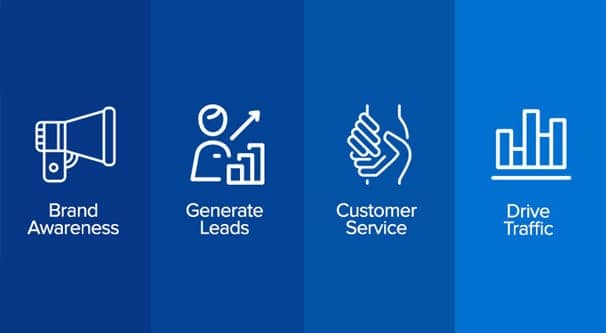
2. Find Your Target Audience
Fewer ads mean less wiggle room to spitball concepts and hope one lands. Instead, use the Facebook Audience Insights tool to analyze demographics and target the appropriate audience for your campaign. You can choose between ‘Everyone on Facebook’ or ‘People connected to your Page’ then drill down your audience and look at specific information.
The benefits of this tool to marketers are numerous:
- It allows you to be hyper-specific
- Lets you learn more about the users who follow your page
- Helps you find the content your audience likes
- Allows you to create effective campaigns
3. Get to know Facebook’s New Campaign Budget Optimization Feature Now
With the new ad limitations, Facebook has also announced a new feature: Campaign Budget Optimization, or CBO for short. And it’s a mandatory one.
Essentially CBO is a tool that automates “the process of allocating an advertiser’s Facebook budget between different ad sets,” Business Insider reports. And everyone will be forced to use it once it becomes officially active. CBO will make marketers “set one central campaign budget that continuously distributes in real-time to ad sets with the best opportunities, throughout the course of your campaign,” according to Facebook. Now some will shiver at this loss of control. That’s to be expected, but CBO is not without some elements of manual capabilities.
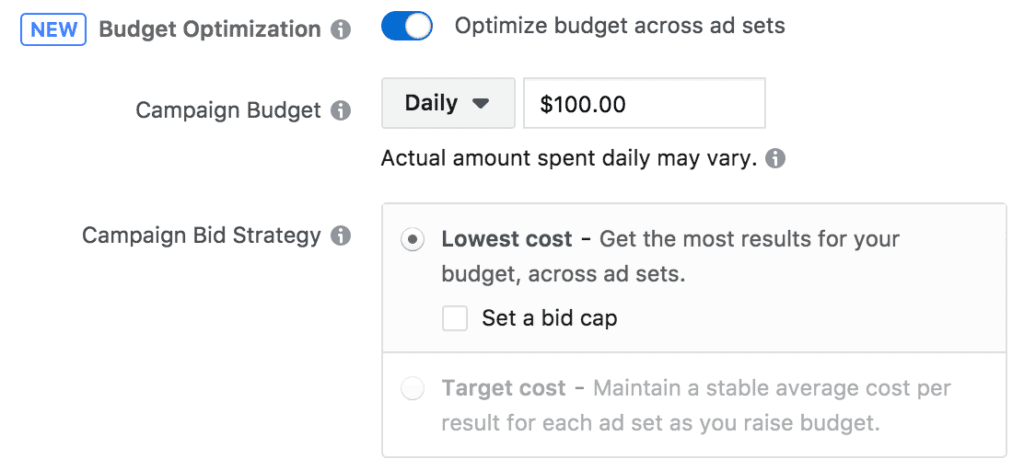
Facebook explains that advertisers can still adjust daily budgets as well as the lifetime budget of a campaign.
“For example, if you have 2 active ad sets in your campaign, we might spend 90% of your budget on one ad set if that’s how we can get the overall best results. Therefore, when you use CBO, it’s important to analyze results at the campaign level, rather than at the ad set level” the company says.
This is great for novice users not savvy in the intricacies of managing a Facebook campaign. That said, this also means you’re at the mercy of Facebook’s algorithm. But you really have no choice. This mandatory shift is something marketers should familiarize themselves with now, so they’re ready when the official roll-out of Facebook’s new ad limitations takes place in a few months.
4. Analyze Your Data Differently
With the aforementioned shift to CBO, how you analyze the effectiveness of your campaigns should change.
Instead of looking at individual ads, marketers should start measuring effectiveness based on the total number of results for the campaign as a whole. This also applies to tracking your costs—instead of at the ad level, marketers should track the average cost per optimization event at the Campaign level.
And since Facebook uses machine learning to optimize campaign results, it’s important to wait at least a week before making any adjustments. This way, Facebook’s algorithm will have time to learn how to optimize your results. Don’t make changes too often with your ads before the Facebook ads algorithm has a chance to figure it out.”
5. Follow Up and Adjust
Just because a campaign ends or becomes inactive doesn’t mean your work is over. Regardless of the new ad limitations, savvy marketers know that you have to analyze campaigns on an ongoing basis.
Campaign managers need to look at everything from CPM metrics to frequency and relevance regularly, then adjust accordingly with new creative and copy to continue to see quality and performance.
6. Put Money Into Your Best Performing Campaigns
Rather than reinvent the wheel each time you open Facebook Ads Manager, play to your strengths and reuse or rework winning ads before creating brand new ones.
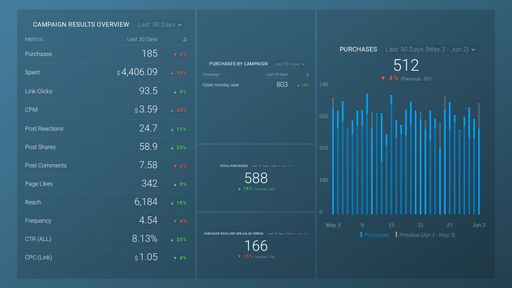
Sure, Facebook ads fatigue is a real thing, but use the data to determine what’s tired and what’s wired before you spend precious hours coming up with wildly new campaigns. Put more money into your big winners. Or to quote the old adage: If it ain’t broke, don’t fix it.
7. Stay up to date on Facebook Ad Changes
Facebook is constantly updating, tinkering, and changing the social network and that includes how advertisers use the service. That’s why marketers have to stay up to date on all the latest Facebook news. Think of it as a continuing education class, something that will help you refine and remain in the game while benefiting your clients in the long run. Because no matter what, just when you think you know everything about Facebook, Mark Zuckerburg is bound to make a new announcement — like it or not.
Need some help navigating these new Facebook ad changes? Contact us—we’d love to help you up to your social media game.
For new Pages, the Facebook ad limits come into effect on 16 February 2021. To find out when the ad limits will come into effect for existing Pages, you need to log into your Business Manager account where you’ll find a new dashboard called Ad limits per Page in the main menu – this will tell you how much time you’ve got to work with.

